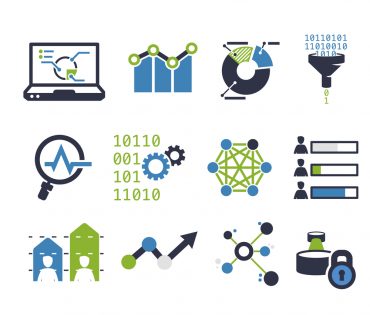
Process intelligence is the analysis of data in the context of a business process. Here, RTInsights contributor Nina Sandy explains why process intelligence is the next evolutionary step in advancing the power of business intelligence.
Literally everything you do in your business can be considered a process. It might be something simple that can be completed very quickly in just a few steps or it might be a lengthy process comprised of numerous steps that take weeks to complete. In either case, if you don’t have adequate process intelligence, that is, if you can’t understand your data in the context of these business processes, you will never fully grasp how your processes are performing.
The complexity of today’s IT environments has exceeded the capabilities of traditional business intelligence (BI) tools. Data is everywhere; it’s in databases, on-premises applications, Software-as-a-Service (SaaS) applications, flat files, legacy systems and web services. Data is housed in distributed environments and there’s 24/7 demand for data access. Therefore, data must be available anywhere, and access to data must also support standard as well as Bring-Your-Own-Data (BYOD) technologies. Business processes further increase this complexity, with steps spread across many systems of record and having many end-to-end monitoring and analysis requirements.
Greater competition. Regulatory requirements. Speed of change for end-to-end monitoring. Analysis of complex processes that transcend traditional system boundaries. These factors are also driving the need for tools that go beyond traditional BI.
To achieve true operational BI, it’s imperative to know what the data means in the context of your business processes.
Process Intelligence: Insight into the Bigger Picture
An organization’s success is directly tied to how well it manages its business processes. Effectively managing business processes requires understanding the quality and timeliness of how these processes are performed. To this end, the Association for Information and Image Management (AIIM) recently surveyed business managers and C-level executives across the globe to understand how organizations adapt their business processes to manage complexities inherent in the Information Age today.
When asked about the business issues organizations are trying to solve in relation to operational processes, nearly 60 percent of survey respondents cited process delays as the number one problem. Inefficient process times are costly in terms of organizational responsiveness, compliance and risk mitigation, and customer satisfaction. Furthermore, only 25 percent of survey respondents stated they have taken the necessary steps to measure end-to-end processes across their enterprise; many organizations still approach process management in a piecemeal fashion.
When organizations lack the “big picture” view, challenges to eliminate inefficiencies and reduce risk and conditions of non-compliance intensify. Perhaps the most compelling find was that 55 percent of survey respondents stated they are planning to use a process intelligence solution in the future.
Business Intelligence is Not Enough
Traditional BI and reporting tools have high data latency—often more than 24 hours—with data sets that are often incomplete and difficult to change. Data discovery tools are primarily optimized for data analyst exploration but are impractical and offer limited scalability for operational personnel who, generally speaking, have no understanding of the processes.
A significant limitation of BI and data discovery tools is that the metrics lack connection to business context, making it difficult for the user to interpret and give those metrics meaning. These obstacles signal the need for automated process intelligence.
Process Intelligence Advances Business Intelligence Power
Process intelligence is the next evolutionary step in advancing the power of BI. By linking data and metrics to steps in business processes, process intelligence provides the insight to understand how processes and the operations they represent are working. Process intelligence uncovers bottlenecks and exceptions that could be putting an organization’s regulatory compliance at risk. Process intelligence monitors adherence to a service-level agreement (SLA) or other performance obligations. Quite simply, process intelligence delivers the critical context necessary to answer questions that are not addressed with mere tools.
Process intelligence allows you to understand your operating data in the context of your business processes—even when the individual steps in those processes span multiple backend systems—and predict future conditions that may present challenges or opportunities. This enables you to recognize areas of inefficiency or waste and highlight compliance and risk exposures. It even reveals so-called dark processes in which your organization actually follows process steps that are either unknown or very different than what is generally understood or expected.
Process intelligence measures process analytics and process quality. Process analytics is generally associated with the mathematical analysis of processes. Typical examples include the calculation of turnaround time between specific process steps and the frequency with which certain process paths are favored over others. Because this is delivered as part of a BI platform, you can easily slice and dice the data to find out:
- Who was in charge at times of optimum best performance?
- Which shift had the worst turnaround time?
- Which products take the longest to pack and ship?
Process quality is often thought of as synonymous with process compliance. Process quality deals with how well process instances comply with expected behaviors. Process quality can detect, analyze and understand when process steps are skipped, repeated or otherwise completed out of sequence.
In addition to its ability to analyze any individual process instance, process intelligence supports the ability to examine the entire population of process instances (or some subset of interest) to determine patterns of execution that may be beneficial for process improvement and performance optimization.
Finally, just like many other system data or measurement tools do, process intelligence tools can immediately alert one or more users to notify them of a potentially detrimental situation. This ensures you have the right data at the right time to mitigate or correct a problem and to maximize an opportunity.
Why Business Intelligence Doesn’t Work
You may have existing investments in BI or related technology where you would love to apply this kind of analysis so the obvious question is, why can’t you? The reason is simple. BI is good at performing discrete calculations and point-in-time (also called tuple-versioning) metrics but it cannot tell you what these metrics mean to the overall business operation. In order to understand the importance of these isolated metrics, it is up to the user to provide the logical context of what that value means to the business. This might be a reasonable scenario if there are only a couple of simple process instances. But processes are never that simple.
One of the biggest challenges for BI tools is that they lack the built-in understanding of what is supposed to come next in the process. Without this logic, they are unable to calculate or detect important conditions. The responsibility for defining and comprehending all of the business logic often falls on IT, which translates to more coding (and not trivial coding either) and long delays.
Without process intelligence, your organization will be forced to make decisions based on just a subset of the critical data it needs.
Process Intelligence in Action
Enterprises that ingest mounds of data with a multichannel capture solution can have real-time access, metrics and reports, classification, and extraction performance of their capture solutions. Financial institutions that offer mobile capture capabilities (such as bill pay and remote deposit) can know when, why and how their mobile capture solution works among varied mobile devices, types of documents and more. With process intelligence as a component of the capture solution, organizations have the opportunity to reduce cost and improve accuracy and performance.
Think of what the accounts payable (AP) team needs to support the organization. A daily dashboard report summarizes the status of the AP processes, providing the ability to drill down to individual invoices and take specific actions (such as reassigning invoices or escalating invoices to a supervisor).
Unfortunately, completely integrated analytics is often delivered in partial solutions or with multiple third-party tools. This requires AP staff, IT or business analysts to develop baseline analytics. Companies are making substantial investments in AP systems but it’s time to insist on delivery of comprehensive process intelligence for AP.
Process Intelligence: Lender and Healthcare Examples
The benefits of incorporating process intelligence throughout the organization can best be illustrated through a mortgage lender example. Mortgage lenders collaborate with several third-party providers whose processes interact with their internal systems of records. Beginning at the loan origination process and on through underwriting, funding and servicing, it’s essential to have insight into the performance of the capture solution in order to process bottlenecks among departments and people. This insight gives a lender better control over the quality of processes and what is delivered to their customers.
Likewise, in the healthcare industry, hospital administrators and patients would immensely benefit if the healthcare provider had real-time insights into the patient flow in emergency room visits or medical procedures to ensure the utmost care is provided in a timely manner.
While BI solutions will continue to have their place in more tactical areas, when looking at these real-world scenarios, it becomes abundantly clear that process intelligence offers significantly greater insight to benefit your organization and customers.





























